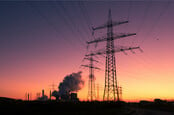Power crunch threatens to derail AI datacenter construction
Summary
A new Turner & Townsend report — based on data from 300+ projects and 280 industry experts — finds that power access and supply-chain issues are seriously constraining the rapid build-out of AI datacentres. Nearly half of respondents flag grid connection delays (sometimes years long) as the top scheduling bottleneck. The scale of planned AI infrastructure is enormous — OpenAI projects alone would need tens of gigawatts — and datacentres now compete directly with housing and manufacturing for limited grid capacity.
The report recommends on-site generation, energy storage and grid-independent solutions, but in practice many operators are likely to rely on gas generators. Meanwhile, 83% of professionals say local supply chains cannot currently support the advanced liquid-cooling equipment required for high-density AI racks. AI-optimised datacentres are costlier to design and build than air-cooled facilities, and hardware production constraints may further slow deployment.
Key Points
- 48% of datacentre professionals cite power access and long grid-connection wait times as the primary scheduling constraint.
- OpenAI’s disclosed projects would consume ~55.2GW — enough for ~44.2 million households — highlighting the scale of demand.
- Turner & Townsend suggests on-site generation, energy storage and grid-independent solutions; renewables are recommended but gas turbines are the likely near-term reality.
- 83% of respondents say supply chains are not ready to provide the liquid-cooling tech needed for AI-grade, high-density deployments.
- AI-optimised, liquid-cooled datacentres cost 7–10% more than equivalent air-cooled designs; air-cooled costs-per-watt have also risen (5.5% year-on-year).
- Chip and hardware supply constraints pose an additional risk to construction timelines and capacity scaling.
Context and Relevance
This is a crucial read for anyone tracking AI infrastructure, datacentre investment or energy policy. The story sits at the intersection of climate, industrial planning and national competitiveness: governments and hyperscalers want AI capacity fast, but grids and supply chains weren’t built for this sudden, concentrated demand. Expect shifts in procurement strategies, more interest in on-site/backup generation and storage, and pressure on regulators to speed grid connections. For operators, planning must now factor power timelines and advanced cooling supply risks into rollout schedules and budgets.
Author style
Punchy: the piece is blunt — the AI datacentre boom is real, but power and supply-chain bottlenecks could turn ambitions into expensive delays. If you care about build schedules, CapEx or national AI strategy, this is not fluff.
Why should I read this?
Quick take: if you’re involved in datacentre planning, energy policy, cloud strategy or AI ops, this saves you time — it spells out the crushing mismatch between demand and the things that actually make datacentres run: electricity and cooling kit. It’s short, sharp and tells you where the real headaches will be.
Source
Source: https://go.theregister.com/feed/www.theregister.com/2025/11/05/supply_chain_woes_and_power/

